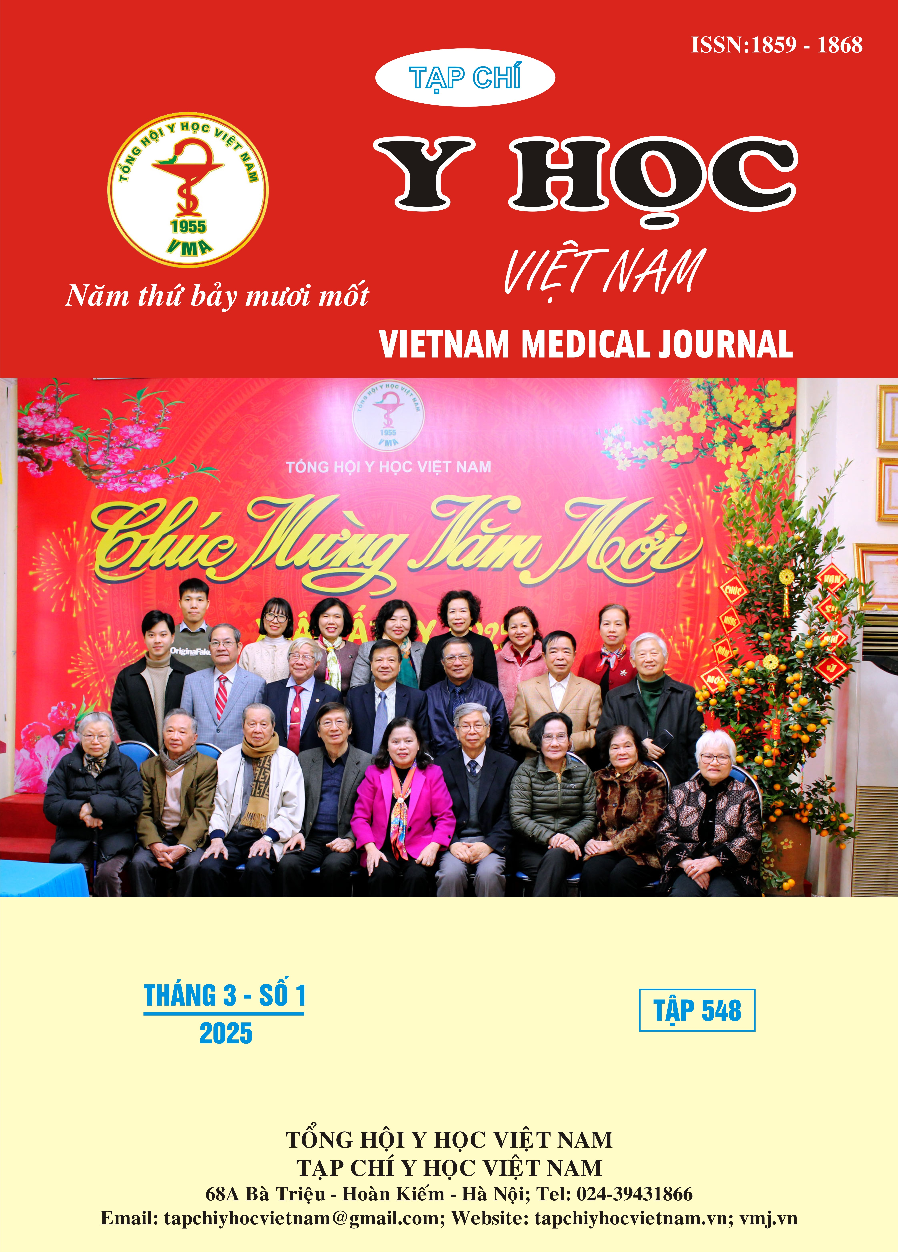NGHIÊN CỨU ĐẶC ĐIỂM TINH DỊCH ĐỒ TRƯỚC PHẪU THUẬT CỦA BỆNH NHÂN GIÃN TĨNH MẠCH TINH ĐƯỢC ĐIỀU TRỊ BẰNG VI PHẪU THUẬT TẠI BỆNH VIỆN XANH PÔN
Nội dung chính của bài viết
Tóm tắt
Mục tiêu nghiên cứu: Nghiên cứu đặc điểm tinh dịch đồ của bệnh nhân giãn tĩnh mạch tinh trước phẫu thuật tại bệnh viện Xanh pôn. Phương pháp nghiên cứu: Nghiên cứu mô tả cắt ngang, không đối chứng. Kết quả nghiên cứu: Tuổi trung bình của các bệnh nhân: 26,3 tuổi ± 4,15 tuổi; Phân bố theo chỉ số BMI: < 18 chiếm 9,4%; từ 18-25 chiếm 65,6% và > 25 chiếm 25%; Phân bố theo vị trí giãn: Giãn tĩnh mạch trái chiếm 84,4%, tĩnh mạch tinh phải chiếm 6,3%, hai bên chiếm 3,1%; Phân bố bệnh nhân theo độ giãn tĩnh mạch tinh: Độ I chiếm 3,1%, độ II chiếm 28,1%, độ III chiếm 68,8%. Kết quả tinh dịch đồ trước phẫu thuật: - Thể tích tinh dịch: có 18,8% bệnh nhân có thể tích tinh dịch < 2ml, có 81,2% ≥ 2ml. - Về mật độ tinh trùng: có 25% bệnh nhân < 20 triệu/ml và 75% có mật độ ≥ 20 triệu/ml. - Tổng số tinh trùng: có 31,3 % bệnh nhân có số tinh trùng < 40 triệu và 68,8% có tổng số tinh trùng bình thường. - Di động tiến tới: có 37,5% bệnh nhân có tỷ lệ di động tiến tới < 50%, và 62.5% ≥ 50%. - Tỷ lệ sống của tinh trùng: tỷ lệ sống < 75% chiếm 15,6% bệnh nhân và 84,4% có tỷ lệ sống bình thường. - Hình dạng tinh trùng: hình dạng tinh trùng bất thường < 4% chiếm 21,9% bệnh nhân và 78,4% có hình dạng bình thường. Kết luận: Tỷ lệ bệnh nhân có thể tích tinh dịch đồ thấp hơn 2ml trước phẫu thuật là 18,8%, 25% bệnh nhân có mật độ tinh trùng < 20 triệu/ml, có 31,3% bệnh nhân có tổng số tinh trùng < 40tr; Có 37,5% bệnh nhân có tỷ lệ di động tiến tới < 50%; có 15,6% tỷ lệ sống tinh trùng < 75%.
Chi tiết bài viết
Tài liệu tham khảo
2. Boulanger, M., Dupont, C., & Leclerc, M. (2019). Impact of varicocele repair on fertility outcomes in younger male patients. Journal of Andrology and Male Fertility, 42(3), 215-222.
3. Tunc, O., Bakos, H. W., & Tremellen, K. P. (2018). Effect of age on sperm motility and morphology: A study on men undergoing fertility assessment. Reproductive Biomedicine Online, 36(5), 629-634.
4. Cocci, A., Di Maida, F., Cito, G., Livi, A., Sessa, F., & Natali, A. (2019). The influence of left varicocele on testicular function and seminal parameters: Role of pH and testicular temperature. Asian Journal of Andrology, 21(5), 430-435.
5. Dehghan, A., Kargar, R., & Afkhamzadeh, A. (2017). Right-sided varicocele: Clinical significance, diagnosis, and impact on patient health. International Journal of Medical Research & Health Sciences, 6(8), 101-106.
6. Schlegel, P. N. (2017). Severe varicocele and impaired spermatogenesis: Mechanisms and therapeutic options. Human Reproduction Update, 23(2), 165-173.
7. Krettek, C., Miclau, T., Green, S., & Wu, J. (2021). Improving male fertility outcomes: Relationship between sperm density and conception rates. Journal of Reproductive Medicine, 66(2), 145-152
8. World Health Organization. (2020). WHO laboratory manual for the examination and processing of human semen(6th ed.). World Health Organization.


